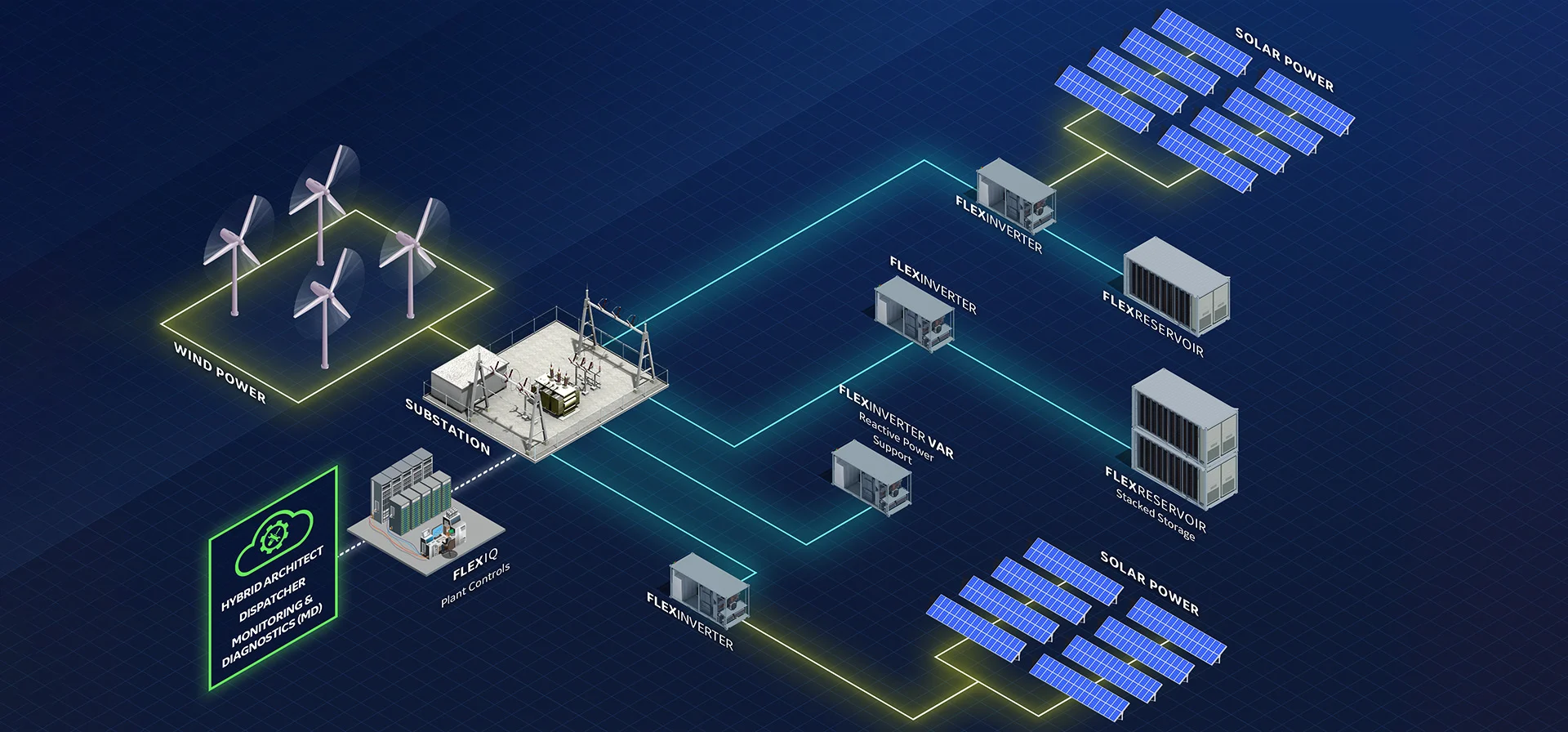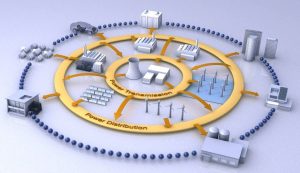- 22 August 2024
- 128
Advances in Smart Grid Technology

Smart grid technology represents a pivotal evolution in how electrical grids operate, integrating modern communication and information technology to enhance the efficiency, reliability, and sustainability of electricity production and distribution. This article explores the advances in smart grid technology, its benefits, challenges, and future prospects, providing a comprehensive understanding of how this technology is transforming the energy landscape.
The traditional power grid, characterized by centralized power generation and unidirectional power flow, is increasingly becoming inadequate in the face of rising energy demands, environmental concerns, and the integration of renewable energy sources. Smart grid technology addresses these challenges by introducing a two-way flow of electricity and information, enabling real-time monitoring, control, and optimization of the power network.
Advances in smart grid technology encompass various domains, including advanced metering infrastructure (AMI), demand response, distributed energy resources (DER), and grid automation. These innovations collectively enhance the grid’s ability to manage complex energy flows, integrate diverse energy sources, and respond dynamically to changing conditions.
Components of Smart Grid Technology

Advanced Metering Infrastructure (AMI):
AMI involves the deployment of smart meters that provide real-time data on energy consumption, enabling utilities to monitor and manage energy usage more effectively. Smart meters facilitate dynamic pricing, encourage energy conservation, and improve billing accuracy.
Demand Response (DR):
Demand response programs incentivize consumers to reduce or shift their electricity usage during peak periods, thereby enhancing grid stability and reducing the need for additional power generation. Advanced communication technologies enable automated demand response, where appliances and systems adjust their operation based on real-time signals from the grid.
Distributed Energy Resources (DER):
DER includes renewable energy sources like solar panels and wind turbines, as well as energy storage systems and electric vehicles. Smart grids integrate and manage these resources, ensuring a stable and reliable supply of electricity while minimizing environmental impact.
Grid Automation:
Grid automation involves the use of sensors, communication networks, and control systems to monitor and manage the grid in real time. Automated systems can detect and respond to faults, optimize power flows, and balance supply and demand more efficiently.
Energy Management Systems (EMS):
EMS are software platforms that provide utilities with tools to monitor, control, and optimize the performance of the grid. These systems leverage data analytics and artificial intelligence to enhance decision-making and improve grid reliability.
Benefits of Smart Grid Technology
The implementation of smart grid technology offers numerous benefits:
Enhanced Reliability and Resilience:
Smart grids improve the reliability of power supply by enabling real-time monitoring and rapid response to disturbances. Automated fault detection and self-healing capabilities minimize downtime and enhance grid resilience.
Improved Energy Efficiency:
By providing detailed insights into energy usage, smart grids help consumers and utilities identify opportunities for energy conservation and efficiency improvements. Demand response programs further optimize energy consumption patterns.
Integration of Renewable Energy:
Smart grids facilitate the seamless integration of renewable energy sources, accommodating their variability and ensuring a stable power supply. This supports the transition to a more sustainable energy system.
Cost Savings:
Enhanced grid management reduces operational costs for utilities, while consumers benefit from dynamic pricing and lower energy bills. Reduced downtime and maintenance costs also contribute to overall savings.
Environmental Benefits:
By optimizing energy usage and integrating renewable resources, smart grids reduce greenhouse gas emissions and environmental impact, contributing to climate change mitigation.
Challenges in Implementing Smart Grid Technology
Despite its benefits, the adoption of smart grid technology faces several challenges:
High Implementation Costs:
The deployment of smart grid infrastructure, including smart meters, communication networks, and advanced control systems, requires significant investment. Securing funding and managing costs can be challenging for utilities.
Cybersecurity Risks:
The increased connectivity and data exchange in smart grids create vulnerabilities to cyberattacks. Ensuring robust cybersecurity measures is essential to protect the grid from potential threats.
Regulatory and Policy Barriers:
Inconsistent regulations and policies across regions can hinder the deployment of smart grid technology. Harmonizing standards and frameworks is crucial for widespread adoption.
Data Privacy Concerns:
The collection and analysis of granular energy consumption data raise privacy concerns for consumers. Ensuring data privacy and building consumer trust are important considerations.
Technical Complexity:
The integration of diverse technologies and systems in smart grids requires advanced technical expertise. Training and retaining skilled personnel is necessary to manage and operate smart grid infrastructure effectively.
Smart Grid Technology

Several regions and utilities have successfully implemented smart grid technologies, demonstrating their potential to transform the energy landscape:
United States:
The Smart Grid Investment Grant (SGIG) program in the U.S. has funded numerous smart grid projects across the country. For example, the Pacific Gas and Electric Company (PG&E) implemented advanced metering infrastructure and demand response programs, resulting in improved grid reliability and energy savings.
Europe:
The European Union’s Horizon 2020 program has supported various smart grid initiatives. The City of Amsterdam’s smart grid project integrates renewable energy sources, energy storage, and electric vehicles, enhancing sustainability and resilience.
China:
China’s State Grid Corporation has invested heavily in smart grid technology, deploying advanced metering infrastructure, grid automation, and renewable energy integration. These efforts have significantly improved grid efficiency and reliability.
Future Prospects of Smart Grid Technology
The future of smart grid technology is promising, with several trends and developments expected to shape its evolution:
Artificial Intelligence and Machine Learning:
AI and machine learning will enhance the capabilities of smart grids by providing advanced analytics, predictive maintenance, and real-time optimization. These technologies will enable more efficient grid management and decision-making.
Internet of Things (IoT):
The proliferation of IoT devices will provide richer data for smart grids, improving their ability to monitor and manage energy flows. IoT-enabled sensors and devices will enhance grid automation and demand response programs.
Energy Storage:
Advances in energy storage technologies, such as batteries, will play a critical role in balancing supply and demand, enabling greater integration of renewable energy sources, and enhancing grid resilience.
Microgrids:
Microgrids, which are localized grids that can operate independently, will become more prevalent. They offer increased reliability, support renewable energy integration, and provide resilience against grid disruptions.
Blockchain Technology:
Blockchain can enhance the security and transparency of transactions within smart grids, facilitating peer-to-peer energy trading and improving data integrity.
Competitive Analysis Table
| Region | Implementation of Smart Grid Technology | Key Benefits | Challenges | Examples |
| United States | Advanced metering, demand response programs | Improved reliability, energy savings | High implementation costs, cybersecurity risks | PG&E’s smart grid projects |
| Europe | Renewable integration, energy storage | Enhanced sustainability, resilience | Regulatory barriers, data privacy concerns | Amsterdam’s smart grid initiative |
| China | Grid automation, renewable energy integration | Increased efficiency, reliability | Technical complexity, high costs | State Grid Corporation’s investments |
| Japan | Demand response, renewable integration | Energy efficiency, grid stability | Data management, regulatory challenges | TEPCO’s smart grid developments |
| Australia | Renewable integration, grid automation | Improved reliability, cost savings | High implementation costs, technical expertise | Smart grid projects in Victoria |
Strategic Analysis Table
| Strategy | Description | Benefits | Challenges |
| AI and Machine Learning | Leveraging AI for advanced analytics and optimization | Improved decision-making, predictive maintenance | Requires specialized expertise, computationally intensive |
| IoT Integration | Deploying IoT devices for real-time monitoring and control | Rich data collection, enhanced automation | Sensor maintenance, data management complexity |
| Energy Storage | Implementing advanced energy storage solutions | Balances supply and demand, enhances resilience | High costs, technological advancements needed |
| Microgrids | Developing localized grids that can operate independently | Increased reliability, supports renewables | Integration with main grid, regulatory challenges |
| Blockchain Technology | Using blockchain for secure and transparent energy transactions | Enhanced security, peer-to-peer trading | Technological complexity, regulatory uncertainty |
The advancements in smart grid technology are revolutionizing the energy sector, enabling a more efficient, reliable, and sustainable power system. By addressing the challenges and leveraging the benefits, utilities and governments can fully realize the potential of smart grids, ensuring a resilient and environmentally friendly energy future.
Conclusion
Smart grid technology represents a significant advancement in the way electricity is produced, distributed, and consumed. By leveraging modern communication and information technologies, smart grids enhance the efficiency, reliability, and sustainability of the energy system. While the implementation of smart grid technology faces challenges, the benefits far outweigh the obstacles. As technology continues to evolve, smart grids will play a crucial role in addressing the energy challenges of the future, supporting the transition to a more sustainable and resilient energy system.

